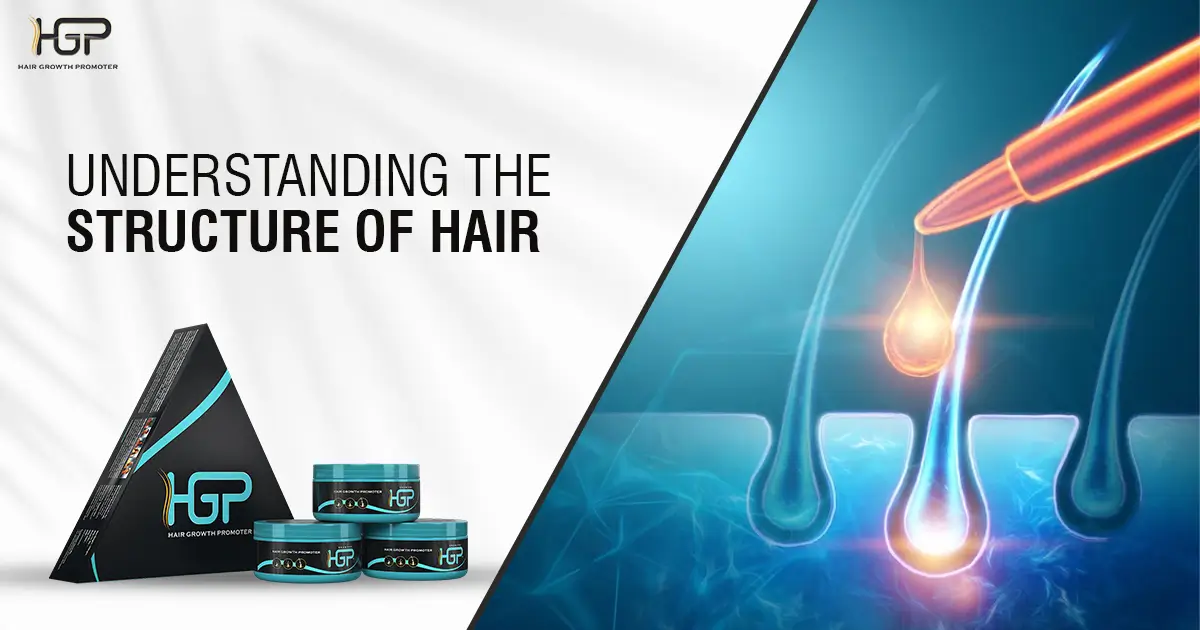Ever wondered why a few people have long and shiny hair but some are not so lucky? Why is it so that occasionally the hair seems like growing at lightning speed and sometimes it refuses to lengthen and instead starts shedding? To get hold of these answers, we need to understand the hair growth cycle and the structure of hair follicles. Hormones, genes, and general health influence the complex hair growth process. Let's talk about the hair growth phases and get a comprehensive picture of the structure of hair follicles before heading toward hair fall therapies and treatments.

Hair Growth Cycle:
The three stages of hair growth are:
Stage anagen: This phase sees the lively growth of hair with a rapid division of hair cells, resulting in new hair growth. This stage continues for nearly 7 years. The lengthier the anagen stage, the more protracted the hair gets.
Stage catagen: After the anagen stage, the hair goes into the catagen stage, which lasts for around two or three weeks. Hair growth impedes along with the hair follicular contraction in this stage. Finally, the blood supply to the hair stops, and the hair enters the next stage.
Stage telogen: This stage remains for about three or four months, and is called the inactive stage. The hair follicle stays latent, and the dead hair comes out of the follicular sac because of the new hair growth below it. Hair loss is naturally evident in this stage.
These stages keep on repeating making a cycle of all three stages.
The Structure of Hair Follicles
Hair sacs are tiny formations situated in the skin. Seven layers make each follicle, and each of these layers has a definite function. Ayurveda acknowledges the hair follicles as the base of Kapha dosha. Hair follicles decide how healthy and long hair growth will be. The hair's follicular structure includes:
Hair Roots: Known as keshya mula in ayurveda, the roots of the hair are the basis of hair growth. The nutrients in the bloodstream or Rasa Dhatu nourish the hair roots. Healthy hair growth is the result of adequate nutrition of the roots.
Follicular Canal: Keshya dhamani is the tubular structure through which nutrition reaches the mula or roots of the hair. The open and clear follicular canal helps nutrients to reach the hair roots.
Sebaceous Glands (Kesha Rasadharakas): The sebum secreted by sebaceous glands is responsible for keeping the hair and scalp moist and free from dryness and breakage.
Cutaneous Papilla: The cutaneous or dermal papilla is the energy center of the hair follicle where the life force is present.
Ayurveda regards hair growth as a sign of an individual's inner equilibrium and condition of doshas. Furthermore, Ayurveda stresses the importance of taking care of hair follicles, which are the basis of healthy hair.
What factors influence hair growth?
Multiple factors may affect the growth cycle of hair, and they are:
Genes: Hair thickness, texture, color, etc, are decided by your genetic disposition.
Hormonal factors: Puberty, gestation, and menopause are the phases when hormonal changes happen and may cause hair loss or stunted hair growth.
Food: Inadequate nutrition such as a lack of vitamins and minerals in the diet influences hair growth negatively. A balanced and nutrient-rich diet is essential for hair growth.
Stress: Stress plays a spoilsport in the healthy hair growth cycle. Excess hair loss and stunted hair growth are some of the adverse effects of stress.
Health Conditions: Overall health conditions also define the volume, hair length, and health of your hair.
Home Remedy for Hair Fall
Diet: Your hair is happy when it is properly nourished inside out. Include lots of fresh vegetables, fruits, calcium, and protein-rich food in your platter.
Herbal hair serum: Hair serums with ingredients like Bhringraj and Jatamansi enrich the hair roots, leading to the growth of hair and less hair loss. Hair serum lubricates hair shafts and roots, reducing hair breakage and dryness. Hair Growth Promoter or HGP is one of the best hair serums for hair fall and regrowth of hair.
Hair Loss Treatment
Ayurveda recommends massaging the hair roots and scalp with herbal oils. Hair serum for hair growth offers adequate nutrition, promoting blood flow to the hair follicles, moisturizing, nurturing, and stimulating hair growth. Male baldness and alopecia require an in-depth study of the causes of this condition.
Closing
To maintain healthy hair, knowledge of the hair growth cycle and the structure of hair follicles is important. By identifying the factors influencing hair growth, timely and proper measures can be taken to assist hair health. While hair health is affected by genes and other factors, steps to maintain and strengthen the hair are possible. Stress is a major cause of male baldness, practice yoga and meditation to control stress. Avoid chemical-laden hair care products that are harsh on hair shafts and damage hair roots, instead try natural herbal products.